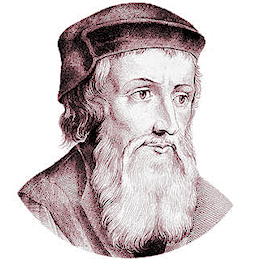Textus Receptus Bibles
John Wycliffe Bible 1382
| 4:1 | Also he made a brasun auter of twenti cubitis of lengthe, and of twenti cubitis of breede, and of ten cubitis of heiythe; |
| 4:2 | he made also a yotun see of ten cubitis fro brynke til to brynke, round bi cumpas; it hadde fyue cubitis of heiythe; and a coorde of thritti cubitis cumpasside the cumpas therof. |
| 4:3 | And the licnesse of oxis was vndur it, and bi ten cubitis summe grauyngis with outforth cumpassiden the brynke of the see as with tweyne ordris; sotheli the oxis weren yotun. |
| 4:4 | And thilke see was set on twelue oxis, of whiche oxis thre bihelden to the north, and othere thre to the west, sotheli thre othere bihelden the south, and thre `that weren residue bihelden the eest, and hadden the see set aboue; but the hyndrere partis of the oxis weren with ynne vndur the see. |
| 4:5 | Sotheli the thicknesse therof hadde the mesure of a pawm of the hond, and the brynke therof was as the brynke of a cuppe, ethir of a lilie crokid ayen, and it took thre thousynde metretis of mesure. |
| 4:6 | Also he made ten holowe vessels, and settide fyue at the riytside, and fyue at the leftside, that thei schulden waische in tho alle thingis, whiche thei schulden offre in to brent sacrifice; sotheli the preestis weren waischun in the see. |
| 4:7 | Sotheli he made ten goldun candilstikis bi the licknesse which he hadde comaundid to be maad, and he settide tho in the temple, fyue at the riytside and fyue at the leftsid. |
| 4:8 | And he made also ten boordis, and settide tho in the temple, fyue at the riytside and fyue at the leftside. |
| 4:9 | Also he made an hundrid goldun viols. `Also he made a large place of preestis, and a greet hows, and doris in the greet hows, which he hilide with bras. |
| 4:10 | Forsothe he settide the see in the riytsyde ayens the eest at the south. |
| 4:11 | Also Iram made cawdruns, and fleischokis, and viols, and he fillide al the werk of the kyng in the hows of God, |
| 4:12 | that is, twei pilers, and pomels, and heedis, and as summe nettis, that hiliden the heedis aboue the pomels; |
| 4:13 | also he made fourti pumgarnadis, and twei werkis lijk nettis, so that two ordris of pumgarnadis weren ioyned to ech werk like nettis, which hiliden the pomels, and heedis of the pilers. |
| 4:14 | He made also foundementis, and holow vessels, whiche he settide on the foundementis; |
| 4:15 | he made o see, and twelue oxis vndur the see, |
| 4:16 | and caudruns, and fleischookis, and viols. Iram, the fadir of Salomon, made to hym alle vessels in the hows of the Lord of clennest bras. |
| 4:17 | The kyng yetide tho in the cuntrey of Jordan, in cleiy lond bitwixe Socoth and Saredata. |
| 4:18 | Forsothe the multitude of vessels was vnnoumbrable, so that the weiyte of bras was not knowun. |
| 4:19 | And Salomon made alle the vessels of Goddis hows, the goldun auter, `and bordis, and loouys of settyng forth on tho; |
| 4:20 | and candilstikis of purest gold, with her lanternes, that tho schulden schyne bifor Goddis answering place bi the custom; |
| 4:21 | and he made summe werkis lijk flouris, and lanternes, and goldun tongis; alle thingis weren maad of clennest gold; |
| 4:22 | also he made pannes for colis to brenne encense, and censeris, and viols, and morters, of pureste gold. And he grauyde doris of the ynnere temple, that is, in the hooli of hooli thingis, and the goldun doris of the temple with out forth; and so al the werk was fillid that Salomon made in the hows of the Lord. |

John Wycliffe Bible 1382
The Wycliffe Bible is the only Bible here that was not translated from the Textus Receptus. Its inclusion here is for the Bible's historic value and for comparison in the English language.
John Wycliffe, an Oxford professor produced the first hand-written English language Bible manuscripts in the 1380's. While it is doubtful Wycliffe himself translated the versions that bear his name, he certainly can be considered the driving force behind the project. He strongly believed in having the scriptures available to the people.
Wycliffe, was well-known throughout Europe for his opposition to the teaching of the organized Church, which he believed to be contrary to the Bible. With the help of his followers (called Lollards), Wycliffe produced dozens of English language manuscript copies of the scriptures. They were translated out of the Latin Vulgate, which was the only source text available to Wycliffe. The Pope was so infuriated by his teachings and his translation of the Bible into English, that 44 years after Wycliffe died, he ordered the bones to be dug-up, crushed, and scattered in the river.